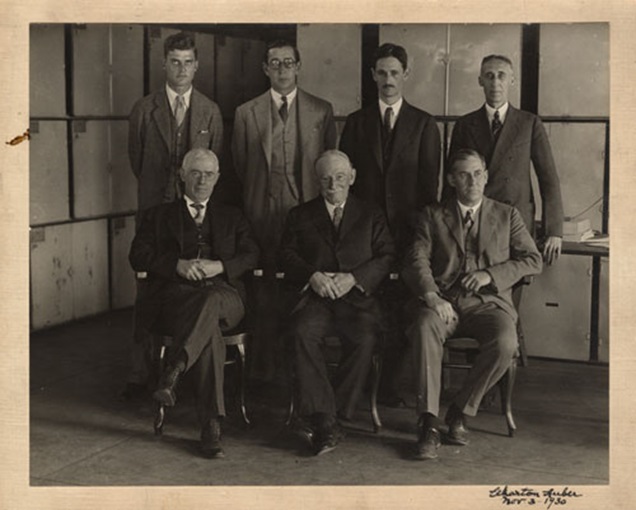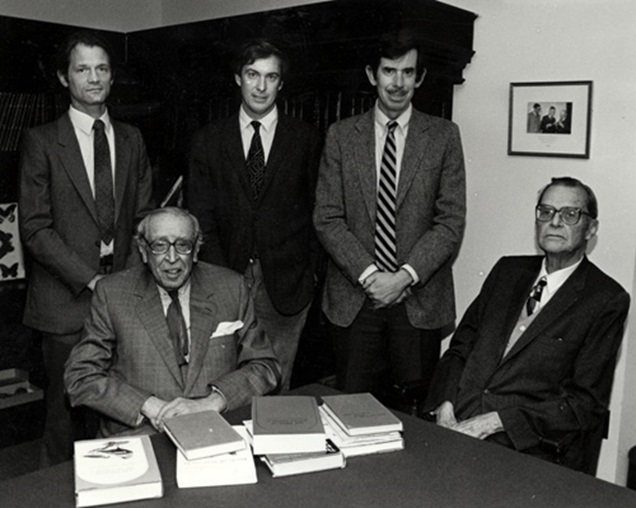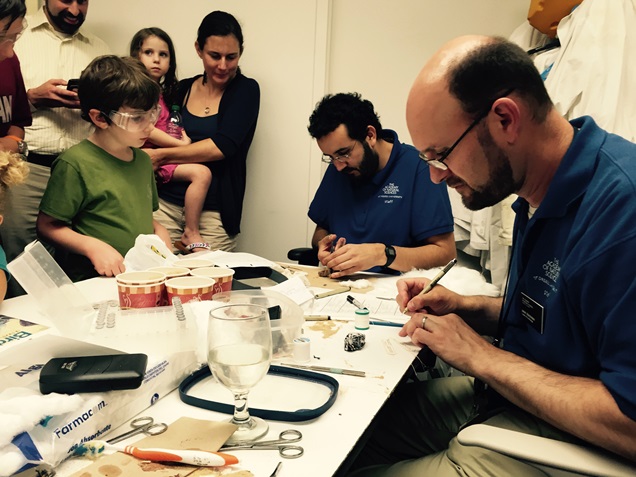History of Ornithology at the Academy
The Early Period (1812-1869)

Many of the pre-eminent early 19th century ornithologists and naturalists enjoyed membership in the Academy and contributed knowledge and specimens to its collections. At the end of this period, the collection was considered among the best in the world thanks to the purchase of several important collections and the contributions of these early ornithologists. One of the first presidents of the Academy, T. B. Wilson, helped purchase a large collection from Europe (the Rivoli and Tristram Collections) that formed the early foundation for the bird collection.
The early Academy collectors and preparators included influential ornithologists such as Alexander Wilson, William Bartram, Thomas Say, Thomas Nuttall, Charles Bonaparte, John James Audubon, John Townsend, Edward Harris, William Gambel, John Cassin, Spencer Fullerton Baird, Graceanna Lewis, and Adolphus Heermann.
The Middle Period (1888-1969)


A resurgence in ornithological study and exploration followed a lull in activity during and after the Civil War. Witmer Stone was responsible for revitalizing the Academy's Ornithology Department by increasing the collection fivefold, and contributing time and research to conservation efforts (protection of birds migrating through Cape May, NJ) and national organizations such as the American Ornithologist's Union (AOU). Stone also brought public interest to ornithology and the bird collection when he founded the Delaware Valley Ornithological Club (DVOC).
In the early 20th century, Rudolphe Meyer de Schauensee and James Bond expanded the scope of Academy ornithology to include international regions: Africa, Asia, and, particularly, the Neotropics. The collections and collecting trips funded by Meyer de Schauensee and Bond form the core of the modern specimen collections with associated metadata such as exact locality, soft part colors, and gonad size. Meyer de Schauensee in particular, saw the potential value in hiring field preparators to make important collections from remote regions of the world. Two of these field collectors hired by Meyer de Schauensee were Melbourne Carriker and Kjell von Sneidern, who together contributed tens of thousands of data rich bird skins to the Academy.
Field notes from Melbourne Carriker's expeditions to Bolivia and Peru have recently been digitized and made available online at the Biodiversity Heritage Library's website.
1st Peruvian Expedition (1929-30)
2nd Peruvian Expedition (1931)
3rd Peruvian Expedition (1932)
4th Peruvian Expedition (1933)
1st Bolivian Expedition (1934-35)
2nd Bolivian Expedition (1936)
3rd Bolivian Expedition (1937-38)
The Late Twentieth Century Period (1969-2005)


Academy Ornithology Department circa 1982
Seated, left to right: Rodolphe Meyer de Schauensee, James Bond (both emeritus curators)
Standing, left to right: J. Peterson Myers, Robert S. Ridgeley, Frank B. Gill (Department Chair)
Frank Gill displayed tremendous leadership that guided the growth and modernization of the Ornithology Department. Gill established a variety of progressive programs that became integral parts of the Department. VIREO, Visual Resources for Ornithology, was established by Gill and is among the world's most comprehenisive collections of bird photographs. Publication of The Birds of North America (BNA) started during this period as a planned series of 720 life histories of the nesting species on this continent. Finally, Gill and Fred Sheldon established the Academy’s avian frozen tissue collection.
Bob Ridgely joined the Department in 1982 and commenced work on his monumental four-volume opus, Birds of South America, illustrated by Guy Tudor. With two the four projected volumes of Birds of South America published by 1994 and thus covering all of the continent's passerines, Bob Ridgely temporarily halted work on that project to complete another landmark work, the two volume Birds of Ecuador, this time illustrated by Paul Greenfield. Published in 2001, the Birds of Ecuador grew out of a major field program conducted in Ecuador during the 1980s and early 1990s with funding from the MacArthur Foundation. This field program consisted of a series of pioneering expeditions to remote areas in Ecuador led by Bob Ridgely and collections manager Mark Robbins. The specimens that these expeditions added to the Department's collections bolstered its already strong collection of birds from Andean countries and made it arguably the most important in the world for the birds of this region.
Frank Gill's own research led to revolutionary changes in the study of higher and lower level systematics. His work on avian mitochondrial DNA variation and DNA-DNA hybridization steered the development of another arm of the Department, which usedmolecular methods to reconstruct avian evolutionary relationships and population history. With the aid of students and research assistants and with the complementary work of molecular systematist Fred Sheldon who joined the Department in this period, the Ornithology Department was an important player in the study of avian diversity using molecular genetics.
In 1994, Frank Gill became Vice-President of Science at the National Audubon Society. Following his departure, Bob Ridgely became Director of the newly established Center for Neotropical Ornithology at the Academy. This provided him with the perfect vehicle for completing the Birds of Ecuador. Inspired by his discovery of the remarkable Jocotoco Antpitta (Grallaria ridgelyi), in late 1997 Bob spearheaded efforts to establish the Jocotoco Foundation for the conservation of Ecuador's birds. In addition to conserving the the habitat of its namesake, the Jocotoco Foundation has written the "how to" manual on birding tourism and international bird conservation programs. Bob Ridgely, has now moved on to continue that vital work at the Rainforest Trust.
Leo Joseph was hired as Ornithology Curator in May 1997 and became Chair of the Department in November 2001. Joseph’s innovative research program tied the molecular genealogical data on birds to their biogeographical distributions. He also initiated the first field collecting and research program on Australian birds by Academy scientists in nearly 160 years. Dr. Joseph left the academy and was hired as the Director of the Australian National Wildlife Collection in 2005.
180 Years of Ornithology at the Academy of Natural Sciences
Current Situation


Nate Rice, who is currently the Collection Manager, was hired in May 1999. His primary tasks are caring for the Academy’s bird study skin and tissue collection, handling loan and information requests, and adding new material to the collection. Nate has continued the Academy’s history of collecting expeditions with major efforts in Africa, Asia, South America, and Australia. Rice has been able to maintain a research program since taking on the collection management duties and publishes primarily on the systematics of suboscine passerines.
In 2014, Jason Weckstein was hired as associate curator of Ornithology and associate professor in the department of Biodiversity, Earth, and Environmental Sciences (BEES) at Drexel University. Jason teaches two Ornithology courses and Biogeography at Drexel University and is advising undergraduate students, graduate students, and postdocs, who work here at the Academy. His lab’s research program uses molecular genetic lab methods and focuses on three main areas: 1) avian phylogenetics, comparative biology and evolutionary history, 2) biodiversity surveys of birds and their parasites and pathogens, and 3) coevolutionary history of birds and their parasites.